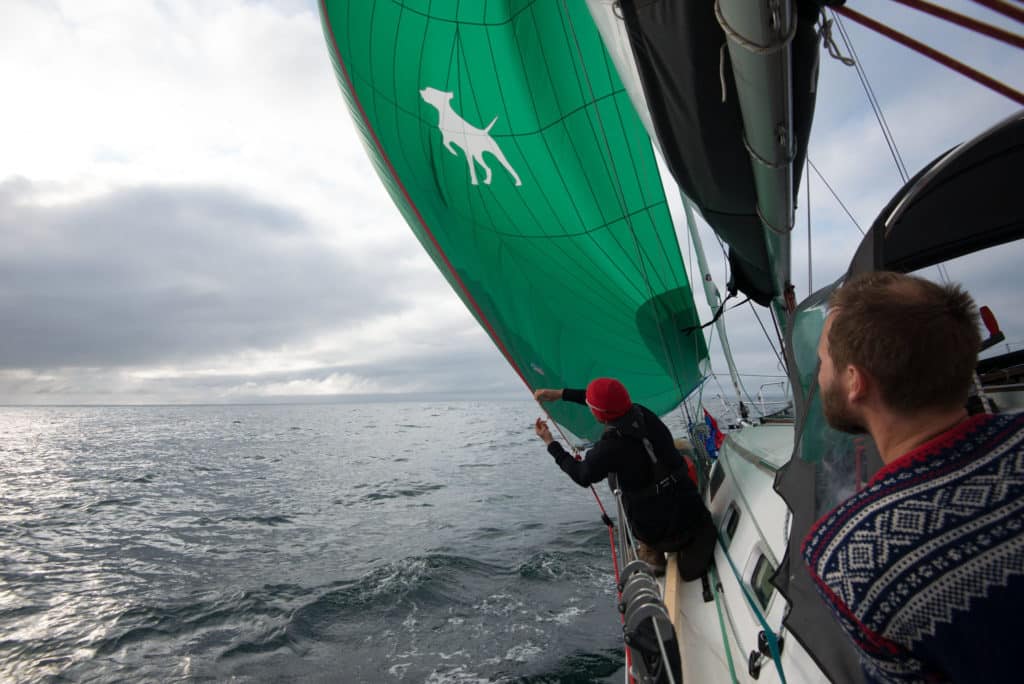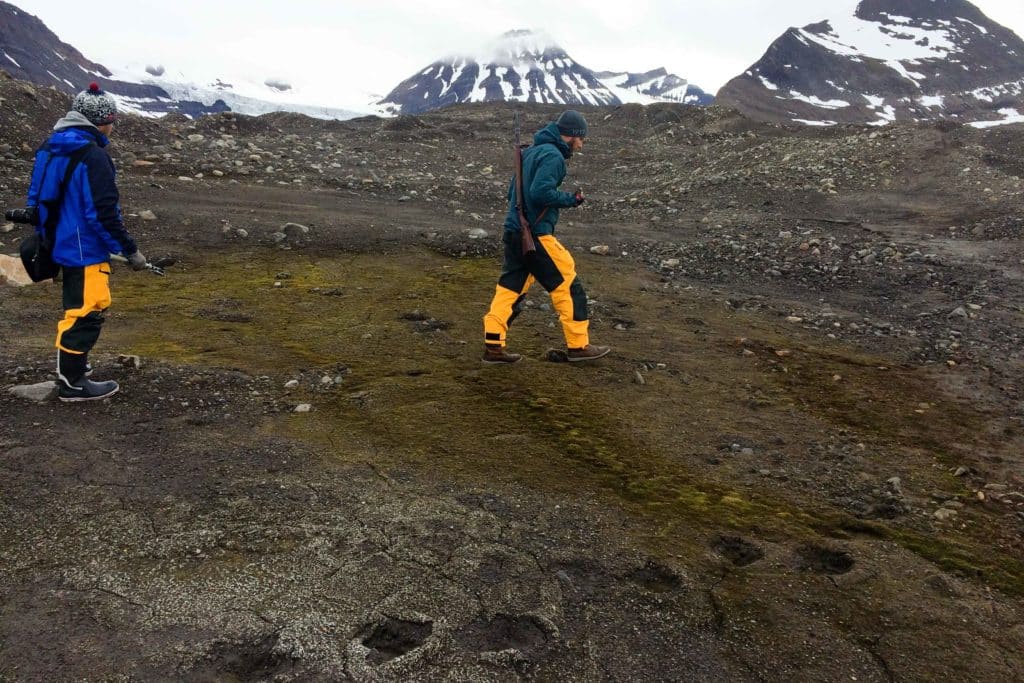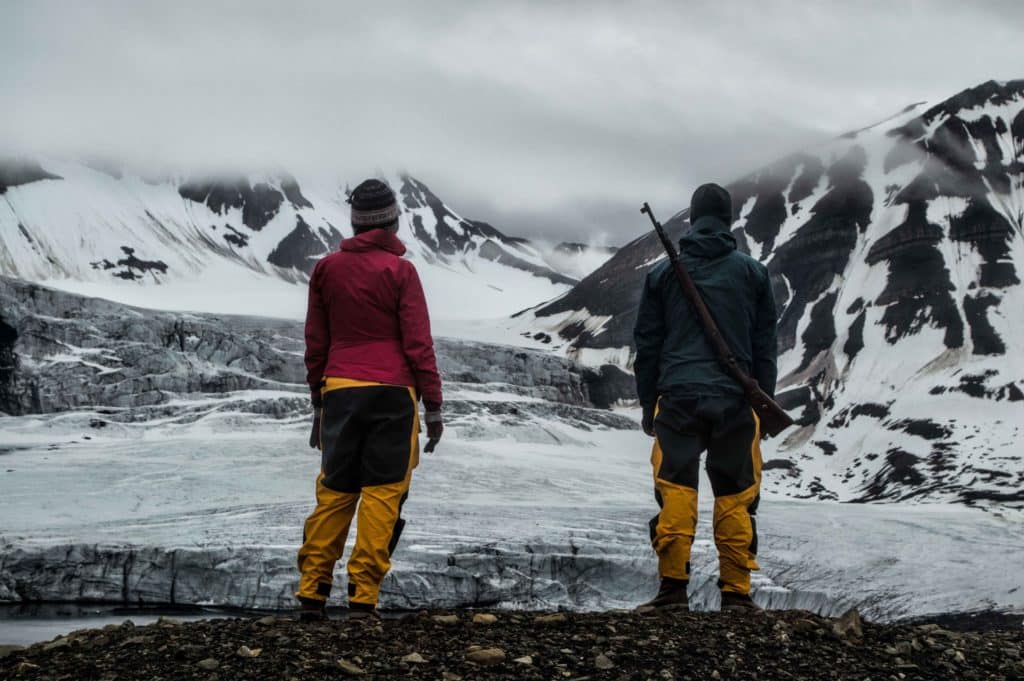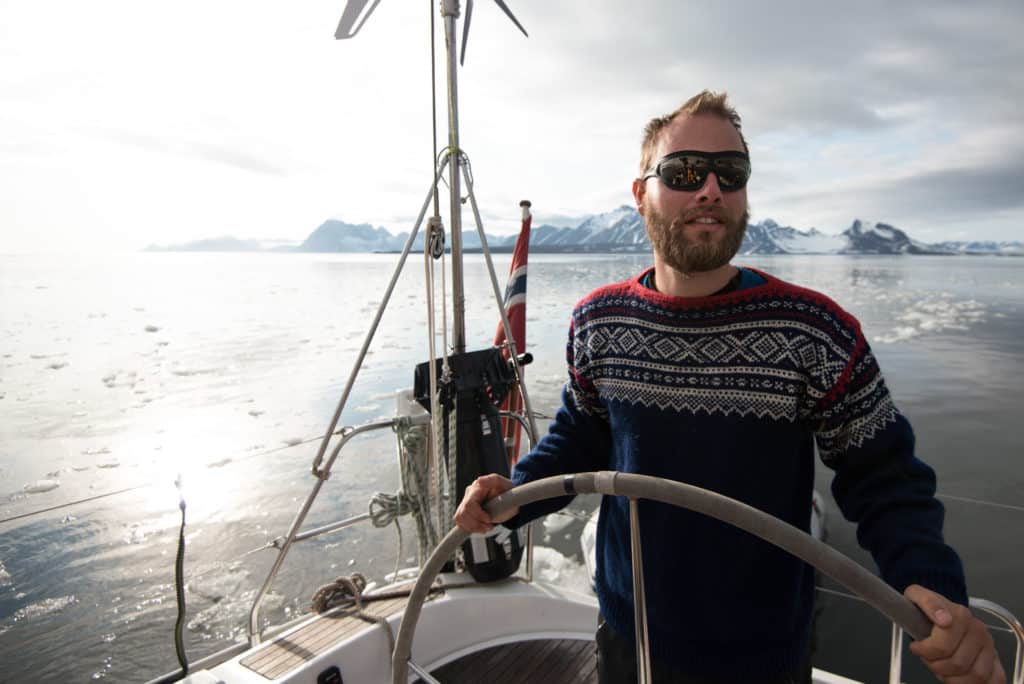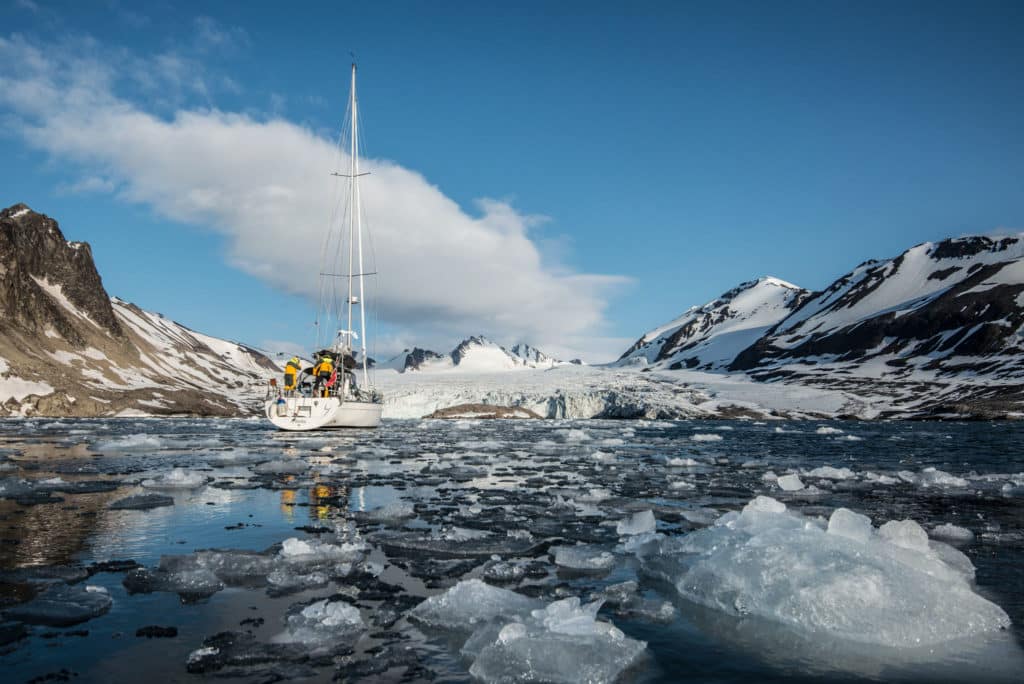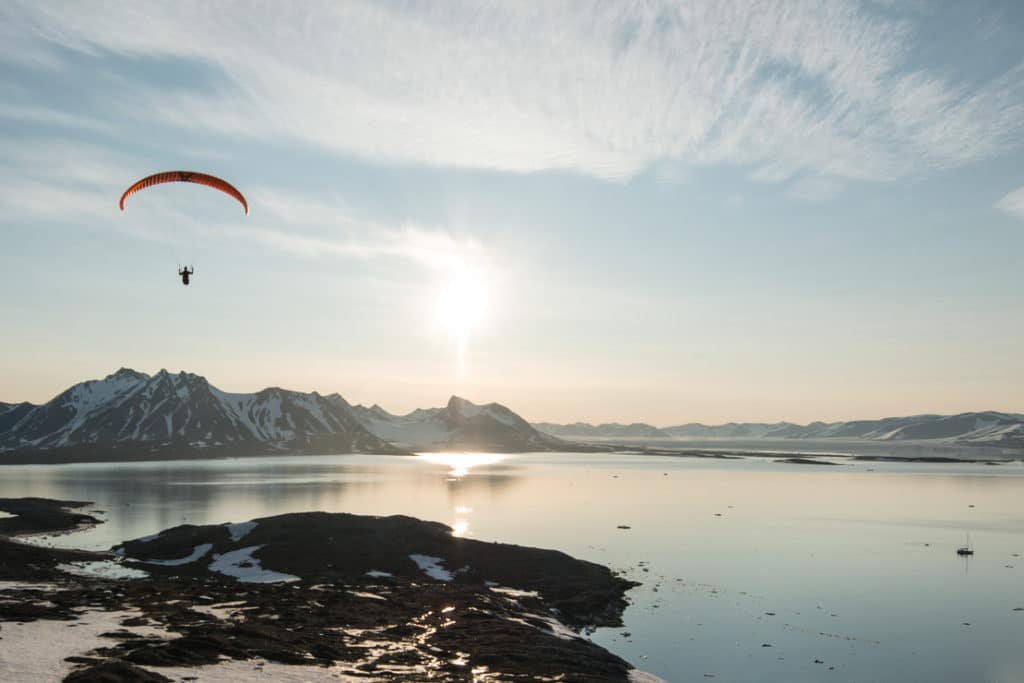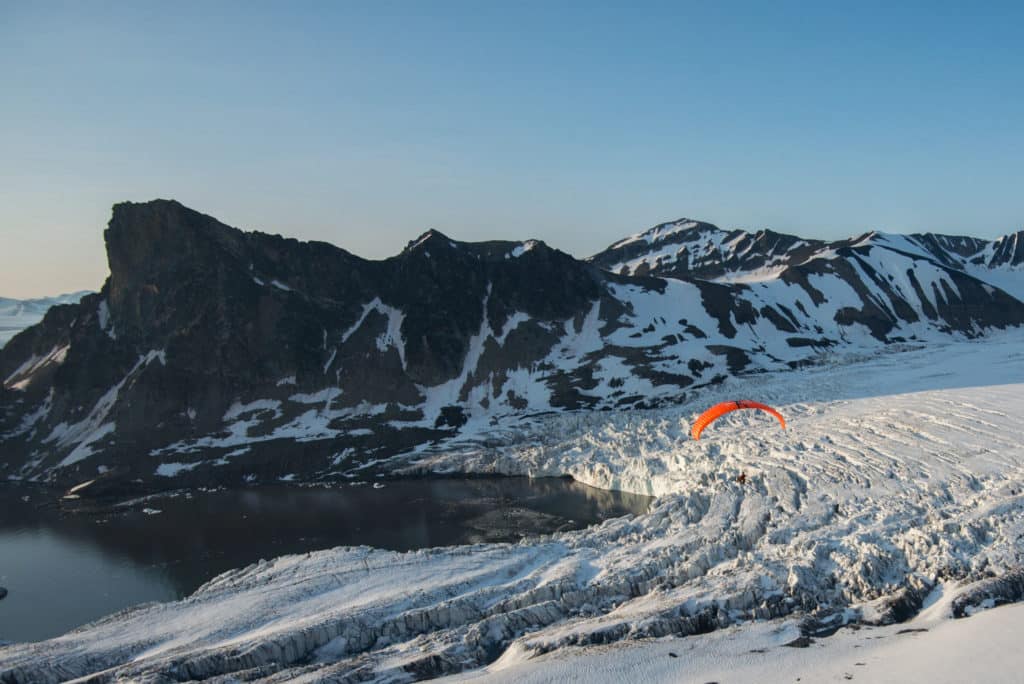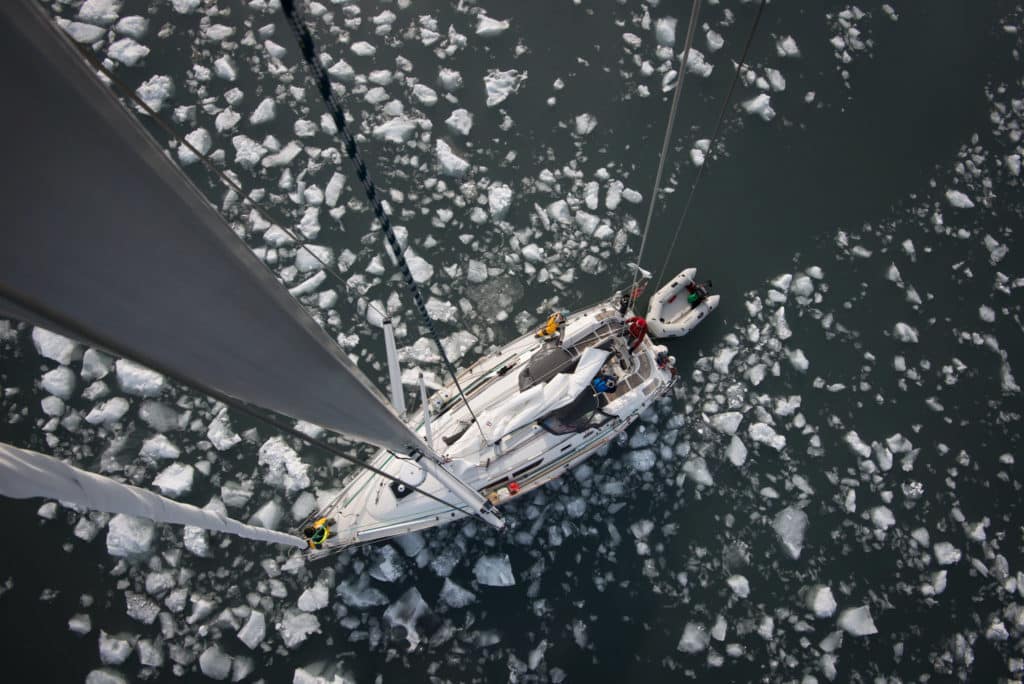It’s been just over a week since the crew of Barba first set foot on Svalbard after making the nearly four-day crossing from Tromsø in Northern Norway. But the endless daylight and constant impressions make it seem like longer. What a sweet reward to have finally arrived in this archipelago of dreams and dreamers!
The crossing seemed to drag on at times, as crossings often do. And the midnight sun and long siestas between watches made it impossible, after a certain point, to tell daytime from night. But the crew had it pretty easy, overall. With good winds and calm seas, we were under sail for well over half of the 490-nautical-mile crossing. And there were even a few appearances by whales and dolphins along the way to entertain us as we plugged along at an average of six knots or so. But we only saw one other boat – a Russian fishing vessel – during the entire crossing to southern Svalbard.
A good six hours before reaching the southern tip of Svalbard, Jon and Andreas got a little surprise while enjoying life on deck. A lone piece of ice the size of a shuttle bus appeared not too far off the bow and caught all of us a bit by surprise. We hadn’t expected to encounter proper icebergs this far south. But it felt like a sure sign that we were headed exactly where we wanted to go.
It was a relief to finally cruise along Svalbard’s southwest coast and round the corner into Hornsund, the fjord on the southernmost tip of the island of Spitsbergen. We had finally arrived. And we switched back to engine power and slowed our approach to enjoy the epic Arctic scenery unfolding before us. We certainly weren’t in Norway anymore. Some 60 percent of Svalbard is covered in glaciers. And Hornsund, too, is banked with long stretches of cracked and calving ice. Soon enough, Barba was being embraced by the bergy bits as we inched closer to the glaciers while spotting seals and scanning the shoreline for polar bears.
Svalbard is home to around 3,400 polar bears – the animals are found in the densest concentrations here of anyplace in the Arctic. And having a weapon and knowing how to use it is mandatory for any visitors who venture beyond Longyearbyen, the archipelago’s municipal capital.
As sailors keen to get some shore leave in the form of hiking and paragliding, we must be armed anytime we are off the boat. So before our first dinghy ride to shore we had an onboard lesson for the crew on how to fire the flare guns to scare an approaching bear. Two of our crewmembers, both ex-Norwegian military men, are the official marksmen and will be armed with rifles anytime we go on land.
The importance of protecting yourself in these wilds was made all the more real during our first shore landing, a few minutes later, when the first things we saw were enormous polar bear tracks criss-crossing the beach. We inadvertently followed the bear’s path up a ridge, where we saw a depression in the rocky earth where it had bedded down for the night. So far, however, we have yet to lay eyes on the animal itself. Seeing a polar bear from the safety of the boat will surely be a wonder. But none among us are keen to run into the King of the Arctic on land.
The southern fjords were spectacular, but civilization was calling. Before making the push to the comforts of Longyearbyen, however, we made another stop on the way north in Recherchefjorden. It was just enough time for Andreas to launch the paraglider and the rest of us to hike to a century-old abandoned coal mining village and check in with some friendly Polish permafrost and erosion scientists at the small research station at Calypsobyen. It was nice for our international delegation and the Poles, all researchers at a university in Lublin, to see some new faces, I think. And we were heartily welcomed into their wooden cabin, which was lined with reindeer antlers and glacier maps, for tea. The researchers regaled us with stories of recent polar bear sightings. One animal, they said, had visited their cabin at 6AM and awakened the team by violently shaking the outside wall.
The overnight sail up to Longyearbyen was a bit miserable, with strong headwinds and long tacks. And what should have taken 14 hours turned into over 18. But arriving into this most civilized of Arctic towns was a worthy reward. And we’ve been celebrating since with a night(s) on the town, hamburgers, cappuccinos, croissants and all the usual comforts of civilization. Sailboats from France, Malta, Finland, Poland, Sweden, Norway and Denmark have all moored up alongside Barba in the harbor. And the past few days have been all about information gathering for our onward travels.
Everyone you talk to in Longyearbyen seems to have a fascinating story of the dream they’re running toward here or the dream they’re already living out. And we’ve met round-the-world sailors, polar bear experts, wildlife filmmakers, anchor-repair machinists, teachers, bartenders, eco-social designers and global warming scientists, among many others, from such diverse places as Australia, Montenegro, Russia, the Philippines and Ohio.
Longyearbyen is the kind of port that can suck you in with its comforts and spirited souls, but we know the real reason we’ve come to Svalbard. So today we’re sailing out to visit the Russian enclave of Barentsburg, after which we will start the push north toward the pack ice.
What’s waiting for us, we’ve been told by those who’ve been there, is all the makings of a sailing adventure of a lifetime. Belugas and blue whales. Bearded seals and bird colonies. Calving glaciers and walrus calves. And polar bears, of course, too. And I’m pretty sure when any of us first spot any of those fabled sights we’ll soon enough forget those comforting cappuccinos back in civilization.
Read the first part of the Barba adventure here.
Find out more, and follow the journey of Barba here.
